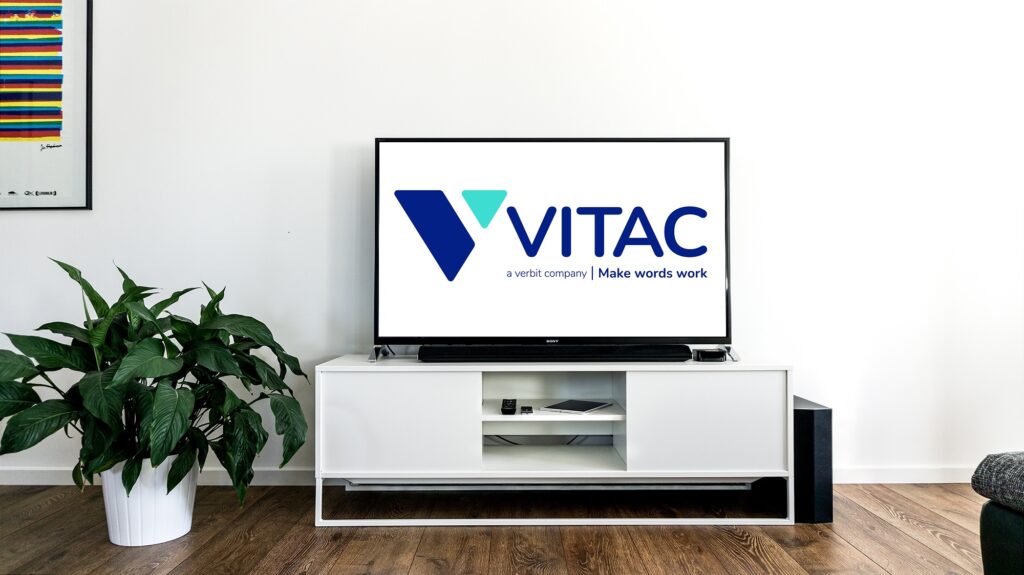As an independent filmmaker, you’ll be well versed in the challenge of balancing an often-limited budget with your creative aspirations. As well as making decisions which affect the artistic integrity of your project, you also need to consider costs associated with the compliance and delivery of your film.
Access services and audio description (AD), specifically, are becoming an increasingly important part of the delivery package that independent filmmakers need to consider. Here’s everything you need to know about them to make an informed decision.
What is an Audio-Described Film?
Cinema audio description makes films accessible for visually impaired audiences by providing an additional narration track that describes what is happening on the screen during natural pauses in the dialogue. The audio description track is normally accessed in cinemas via a personal set of headphones so that other audience members can listen to the original soundtrack uninterrupted.
Do All Feature Films Need to Include Audio Description?
In the UK
While the Disability Discrimination Act 1995 and the Equality Act 2010 don’t specifically mention audio described cinema, this legislation does require movie theatres and other service providers to provide facilities for disabled audiences. According to the UK Cinema Association, the UK cinema sector goes beyond what is legislated and is recognized as a leader in supporting and welcoming audiences.
In the US
Similarly to in the UK, the Americans with Disabilities Act (ADA) requires movie theatres to have and maintain the equipment necessary to provide closed movie captioning and audio description whenever showing a digital movie that has these features. Most major studios provide descriptions with all their releases.
The independent film sector is recognized for being especially passionate about providing accessible experiences and funding applications that include these services can be given preference. In a nutshell, not all feature films include audio descriptions but many of them do.
Are There Different Types of Audio-Described Movies?
Audio description across all feature films have the same purpose and the same basic principles, but AD can be quite stylistically different in different genres of film. This is because audio descriptions are written and voiced to match the style and pace of the film so, while children’s features may be described with a fun tone and relatively fast pace, a horror movie’s descriptions will be more deliberate and will leave more audio gaps for the all-important soundtrack to build tension.
How Do You Produce Audio Description for Feature Films?
Different audio description service providers will have their own unique workflows and tools for producing audio descriptions, but the basic process includes:
A Script Written by Audio Description Professionals
AD scripting is both an art and a science. There aren’t any formal regulations that dictate how AD are scripted, but various partnerships between the industry and organizations for the blind have produced guidelines detailing how audio descriptions should accurately explain the visuals in an objective way that matches the style of the production. Audio description writers have to be skilled at writing descriptions of characters, actions, and expressions that are accurate and neutral, but which elicit an appropriate emotional response – without telling cinemagoers how to feel.
The script has to be succinct enough to fit into the gaps between the original film’s dialogue, so describers have to prioritize describing what is necessary for the audience to understand and enjoy the film. Descriptions need to be accurate, but they also need to help immerse the audience in the story, which a list of facts wouldn’t achieve.
AD scripts also include technical elements to make recording easier. Pronunciation markers provide time codes for where key names or words are spoken in the dialogue to assist voice artists with their pronunciation and buffers must be allocated between the original dialogue and when descriptions start to accommodate audio dips. Script timing is essential to ensure that descriptions sync with the actions they describe rather than pre-empting or lagging behind them.
Recording by the Audio Describer
AD voices are normally recorded with specialized audio description software that automatically inserts countdowns and accommodates the dips and fades necessary for the audio description track. Many audio describers (voice artists) do their own recordings and are often experienced AD scriptwriters that are able to refine the script as necessary during recordings.
Delivery
Cinema audio description files are delivered as part of the DCP (Digital Cinema Package.) The industry standard format for cinema AD recordings is an ESEF file which consists of an .esf file and a set of individual WAV files associated with each description. The .esf file contains all the information about how the individual WAV files should be used, including script data, in and out time codes, fade durations and depth and stereo pan data. Depending on your film’s distribution you may also need to provide left and right STEMS to ensure that the AD track will mix in with the original soundtrack at the correct levels.
What About Audio Description Rates?
As you can see, scripting, recording, and preparing cinema audio descriptions are time-consuming tasks that require specialized skills and equipment, so audio description costs more than most other access services and are often produced by audio description companies. Because different films will require a different amount of AD (depending on the ratio of dialogue to action) and because each genre requires a different style and type of voice or voices, it’s not possible to provide a standard cost to produce AD and each project needs to be costed individually.
What is the Director or Client’s Role in Producing an Audio-Described Movie?
How involved, or uninvolved, you are in the production of your cinema audio descriptions is completely up to you. Audio description service providers can take care of the entire project and simply hand over the final files for delivery or you can review and signoff scripts before recording, take part in the selection of voice artists and review recordings before they’re prepared for delivery.
Where Can You Find Out More About Movie Audio Description?
The Audio Description Association was set up in the UK to meet the growing demand for a national organization to promote and support audio description. It offers training, support, and advice for AD professionals and their website is a resource for users, providers, and practitioners. In the US, The American Council of the Blind’s Audio Description Project promotes and advocates the use of high-quality AD through a range of activities designed to build awareness among the general public as well as its principal users.
If you’d like to find out more about producing cinema audio description, get in touch with our team.




